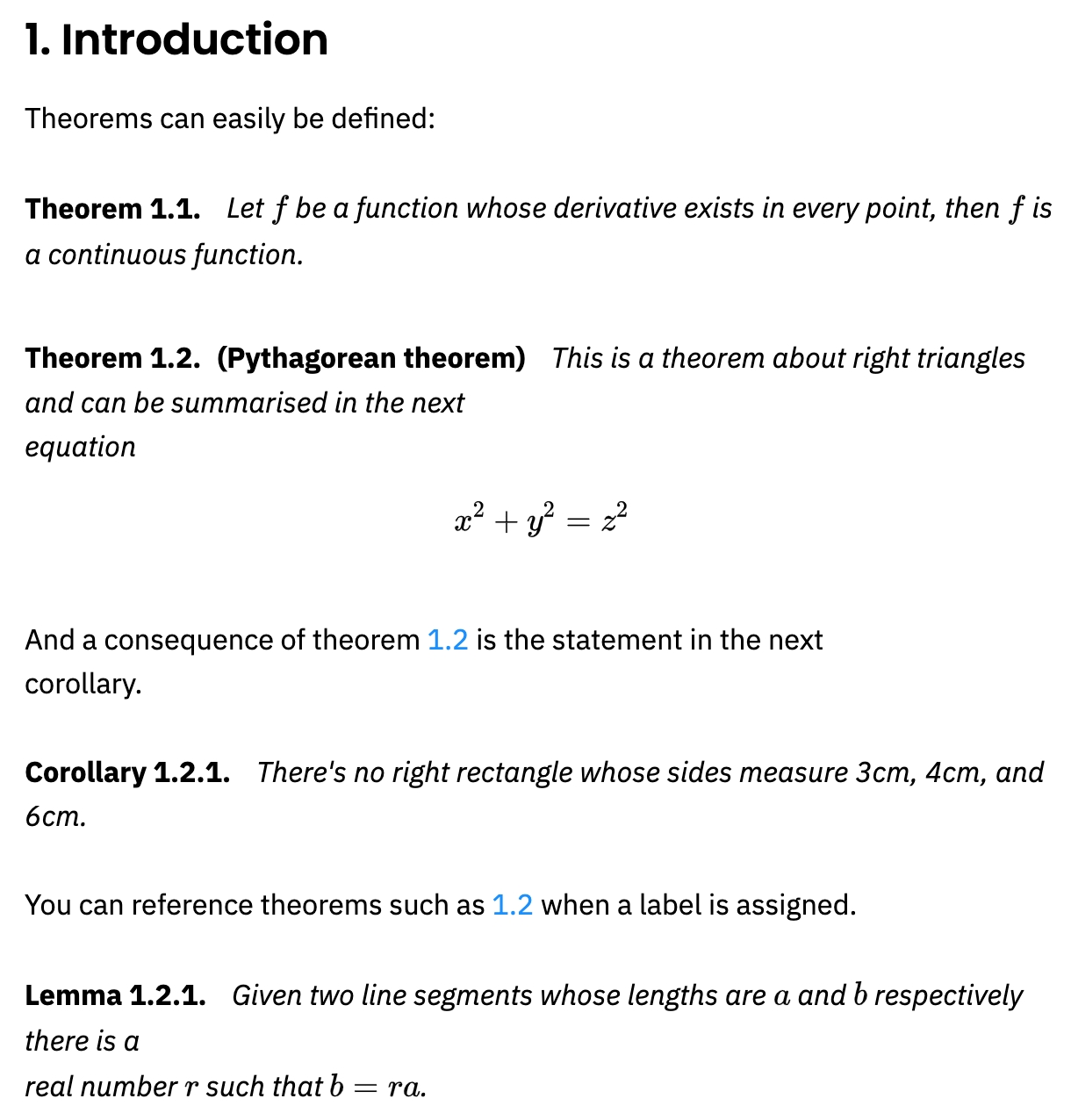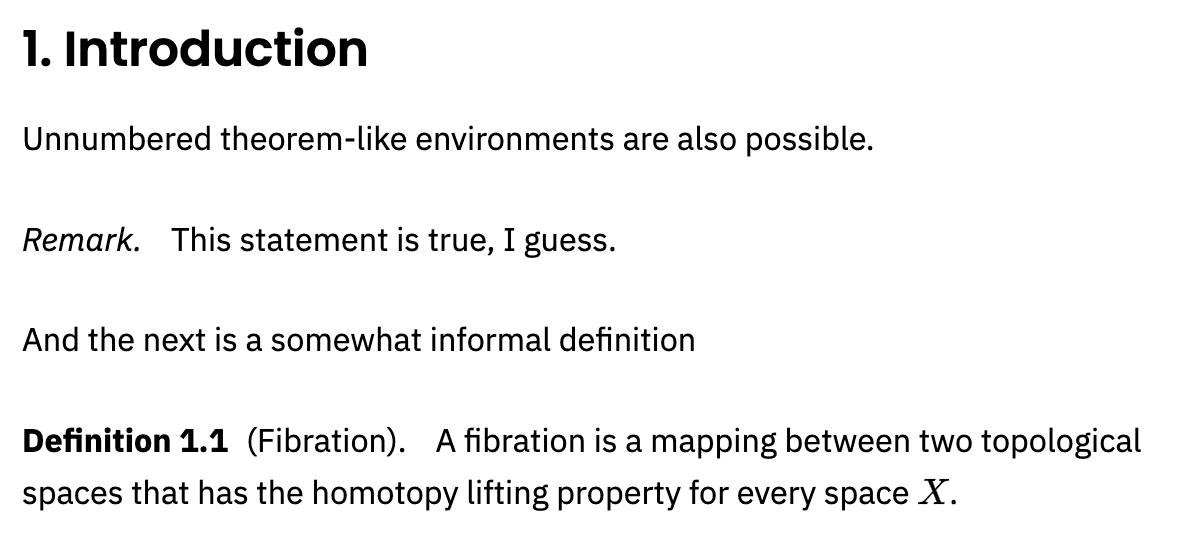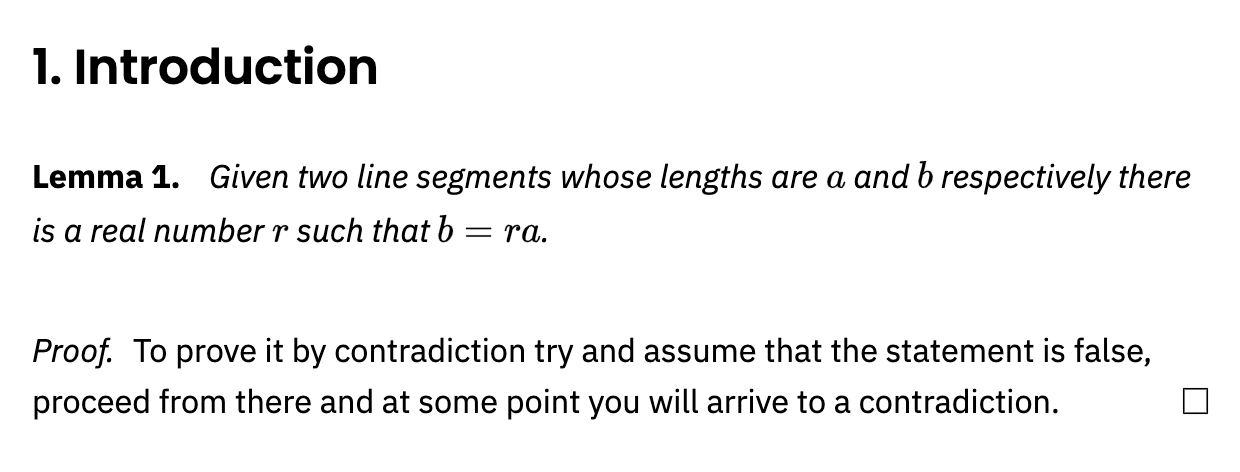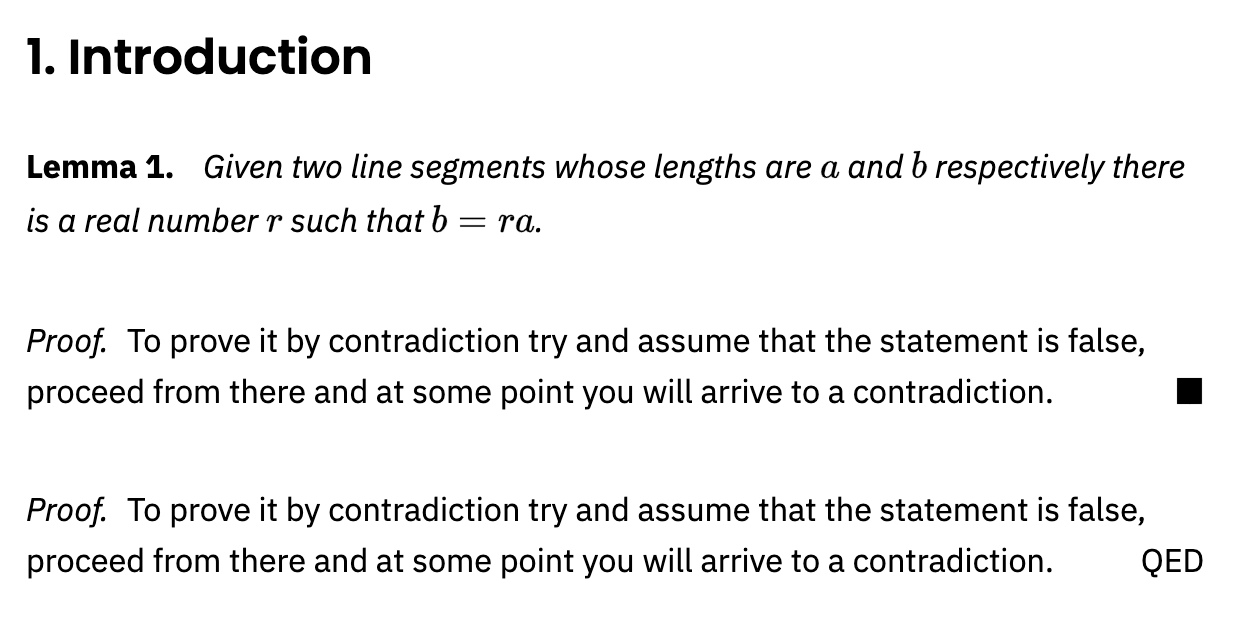How to write theorems and proofs manually on VEGA AI?
Theorems and proofs
Introduction
Mathematical documents include elements that require special formatting and numbering such as theorems, definitions, propositions, remarks, corollaries, lemmas and so on. This article explains how to define these environments in LaTeX.Numbered environments in LaTeX can be defined by means of the command \newtheorem which takes two arguments:\newtheorem{theorem}{Theorem}
the first one is the name of the environment that is defined
the second one is the word that will be printed, in boldface font, at the beginning of the environment. Once this new environment is defined it can be used normally within the document, delimited by
\begin{theorem}and\end{theorem}. An example is presented below:
\newtheorem{theorem}{Theorem}
\section{Introduction}
Theorems can easily be defined:
\begin{theorem}
Let \(f\) be a function whose derivative exists in every point, then \(f\)
is a continuous function.
\end{theorem}This example produces the following output:

Numbered theorems, definitions, corollaries and lemmas
The numbering of the environments can be controlled by means of two additional parameters in the \newtheorem command. Let’s see:
This example produces the following output:

There are three new environments defined in the preamble.
\newtheorem{theorem}{Theorem}[section] This is the example presented in the introduction, but it has the additional parameter [section] that restarts the theorem counter at every new section.
\newtheorem{corollary}{Corollary}[theorem] An environment called corollary is created, the counter of this new environment will be reset every time a new theorem environment is used.
\newtheorem{lemma}[theorem]{Lemma} In this case, the even though a new environment called lemma is created, it will use the same counter as the theorem environment.
Some famous theorems have their own names, for these cases you can add said name inside brackets in the environment opening command. In the example, the line
Some famous theorems have their own names, for these cases you can add said name inside brackets in the environment opening command. In the example, the line \begin{theorem}[Pythagorean theorem] prints “Pythagorean theorem” at the beginning of the paragraph.As with many other numbered elements in LaTeX, the command \label can be used to reference theorem-like environments within the document.
Unnumbered theorem-like environments
It can be useful to have an unnumbered theorem-like environment to add remarks, comments or examples to a mathematical document.

The syntax of the command \newtheorem* is the same as the non-starred version, except for the counter parameters. In this example, a new unnumbered environment called remark is created.
Theorem styles
A feature that is important when working in a mathematical document is to easily tell apart, say, definitions from theorems by its formatting.
This example produces the following output:

The command \theoremstyle{ } sets the styling for the numbered environment defined right below it. In the example above, the styles remark and definition are used. Notice that the remark is now in italics and the text in the environment uses normal (Roman) typeface, the definition on the other hand also uses Roman typeface for the text within but the word “Definition” is printed in boldface font.
Proofs
Proofs are the core of mathematical papers and books, and it is customary to keep them visually apart from the normal text in the document.
This example produces the following output:

Changing the QED symbol
The symbol printed at the end of a proof is called the “QED symbol”. To quote the meaning of QED from Wikipedia:
QED is an initialism of the Latin phrase quod erat demonstrandum, meaning “thus it has been demonstrated”
It is straightforward to use a symbol, or wording, of your choice to represent the QED symbol. The command\renewcommand\qedsymbol{$\blacksquare$}You can be used to replace the default white square for a black square printed by $\blacksquare$, the parameter inside the braces. Or, you can write the word QED explicitly:\renewcommand\qedsymbol{QED}Here is an example to demonstrate both options:
This example produces the following output:

Start theorem counter from specific number
\setcounter{theoremenv}{number} Sets count for theoremenv to contain the value number.
Note: number can be positive or negative.
This example produces the following output:

Last updated